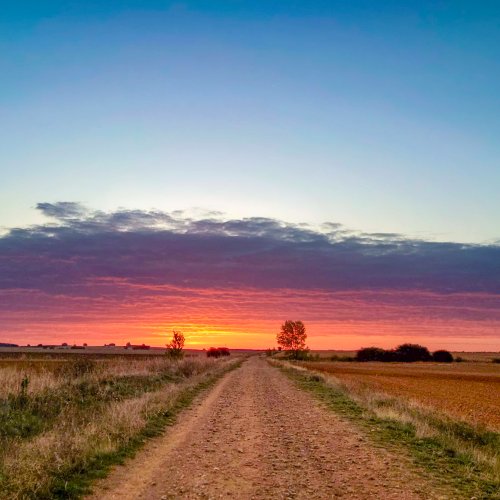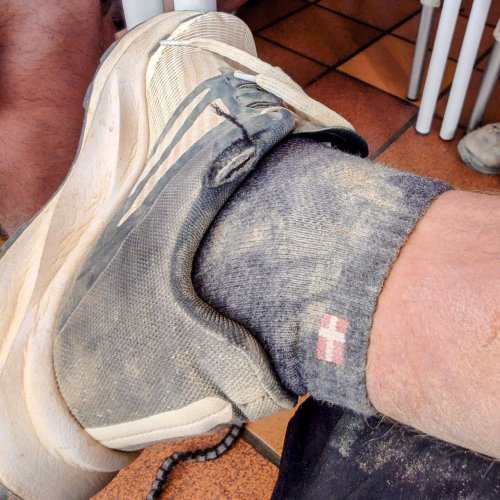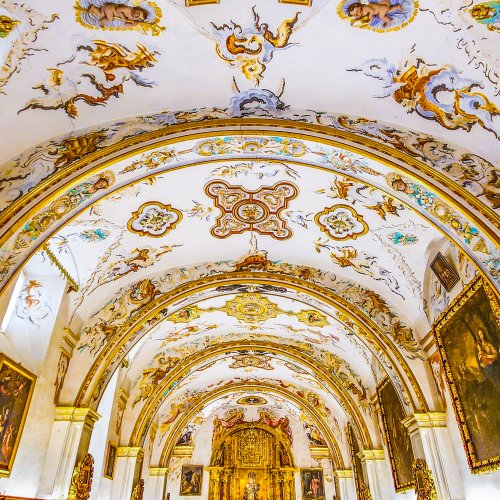I’ve been asked by quite a few members about my recent Camino Invierno (Nov 2023). Here’s a short summary of my 14 day Camino Invierno stages and accommodation.
Gronze is 95% accurate regarding accommodation that’s open. Plus I phoned ahead 2 days to re-confirm. I don’t like walking without knowing where I’ll sleep. It’s not like the
Camino Frances that you can just stop when you’re tired. My suggestion is to break up day 1 so you have a nice day at Las Medulas. I did it all in 14 days but you can make it in 12-13 days.
I had already walked 66 days so could no longer do anymore 30 km days and the Invierno has a lot of climbing. But I think 13-14 days allows you to walk at a relaxed pace as there a lot of climbing and rural days with no human contact. My stages were:
Day 1: Ponferrada to Villavieja (sleep at the very new Municipal Albergue €10 per person per night - you need to phone +34-987-420-806 to get electronic door code, it was 95168 then the JALE button but they may change the code). Village has zero services so you need to carry food - kitchen is fully equipped, I just made noodles and had instant coffee for breakfast.
Day 2: Villavieja (via the Las Medulas Orange mountain peaks) to Puente Domingo
Floréz (sleep at Albergue Rosa, owned by a Latvian couple, beautiful place, max 8 in the place, they provide a full breakfast, it’s by donation, I left €20 as I had a lot of knowledge already of what was standard), there’s a bar & small supermarket around the corner for dinner and next day snacks
Day 3: Puente Domingo Floréz to O Barco (it’s the largest city you’ll pass thru, I slept at La Gran Tortuga, private room with bathroom €25 pp, owned by Silvia a former pilgrim, she prepares breakfast, lots of places for dinner)
Day 4 O Barco to A Rua (very short day, I stayed at a very nice hotel Hostal Pilliban €25 pp, private room with bathroom. It’s right by the church. The town has restaurants for big lunch/dinner plus pastry coffee shop for breakfast)
Day 5: A Rúa to Quiroga (I stayed at the Quiroga Municipal but it was a public hostal also used for immigrants, you may wish to stay at the albergue Quiper), lots places to eat in Quiroga plus small supermarket DIA right down the street.
Day 6: Quiroga to A Pobra Brollón (stay at the brand new municipal €16 pp, everything you need plus town has 2 bar/cafes - restaurants)
Day 7: short day to Monte Lemos (a larger city, Train museum, stay at Albergue Lemavo - very good) - see next Day 8 about shopping on way out of town.
Day 8: Monte Lemos to Montcelo/San PAIO Diomondo (the renovated Diamondo church albergue is a beait experience plus the next day is easier as it starts with a very steep, long rocky forest decent down to the valley & river then a long steep climb to Chantada). You need to carry food to stay at the Diamondo church albergue, on your way out of Monte Lemavo in the morning you pass a LIDL & a another big supermarket that has prepared salads, pasta dishes, etc (Diomondo albergue has a microwave only but it may be possible to ask at the Albergue Lemavo to order you a delivered meal to Diamondo)
Day 9: San PAIO Diamondo to Penasillas (stayed at beautiful Hotel Vilaseco, owner is Manual). It’s a nice stop and not expensive €20 pp and breakfast buffet about €6. It’s maybe 200 meters off the Camino route but you just continue the next morning up the street and you don’t actually lose any time or walk extra.
Day 10: Penasillas to Rodeiro (sleep at Albergue Carpinteiras €12 pp dinner & breakfast in bar/restaurant downstairs, very nice clean new albergue)
Day 11: Rodeiro to Lalín ( Slept at Hotel Caracas but would recommend trying another albergue) Lalín is a nice city, get your wax artisan credential stamp at the Peregrinus info office on the way into town on the pedestrian zone area - there’ll be a huge street placard showing way to Peregrinus office)
Day 12: Lalín to Bandeira (where I stayed in the municipal Albergue de Los Peregrinos Bandeira with a DIA supermarket right around the corner) .
Day 13: Bandeira to Deseiro (stay at Albergue Reina Lupa, great place, new albergue, owner Carmín has a bar/ Restaurant right there and prepares dinner and breakfast, great place and only 11 km next day to Santiago).
Day 14: Deseiros to Santiago (I always stay at the San Martin Pinario Hotel/pilgrim room €27 pp with big breakfast, need to Email for reservation of single or double pilgrims room:
reservas@sanmartinpinario.eu















